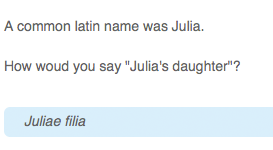
MOOCs for Penn State Credits — A Shift with Radical Implications
Good ideas don’t fade away. They have a habit of sticking around, and in time, they become great ideas. MOOCs are like that. The stumbling block was bucks: “Is there money in this thing?” It took a while, but name brand universities are beginning to see the green. You have to wonder why it took so long since the idea has been around from day one. Regardless, the business model that’s been hiding in plain sight is the multi-track option, and it will soon be featured in Penn State’s MOOC on Coursera, “Presumed Innocent? Social Science and Wrongful Conviction.”1 It will offer two options: free and for credit. Here’s a description: “The course…will be open to University students and the public with two track options. The free track will function much like Penn State’s previous MOOCs, while the for-credit portion will require a heavier workload and offer instructor and TA feedback and assessment on completed work in exchange for a fee less than that for an average college course.”
The fascinating part of this is what appears to be a waiving of standard admission procedures. I haven’t read the details on how this will all work out, but it seems anyone anywhere can register for the credit version, and if successful, earn Penn State credits. The only requirement is a fee that’s described as lower than average for a college course. If this is indeed what’s planned, then they’re setting a precedent that could ultimately change the higher ed landscape. Students will soon be able to earn college credits from top universities around the world from the comfort of their home and for a price that many if not most will be able to afford.
The impact on higher ed will be immense. Colleges and universities will need to open up their policies for granting degrees, and their emphasis will probably shift from primarily instruction to include large scale certification options, and this may mean a realignment of staff, with many leaving the classroom for duty as advisors.
Multimedia Web Skills — A Coming Crisis for Teachers
Paul Beaudoin, in “Six Ways to Be a Better Online Teacher,”2 explains how Shoba Bandi-Rao, an assistant professor at Borough of Manhattan Community College/CUNY, has “her students combine e-text, audio, images and video to create their digital stories.” They use “free software such as Wevideo and Window’s Movie Maker.” According to Bandi-Rao, “They shared their projects in class and had the opportunity to comment and receive feedback from their peers.”
This ability to create video presentations and share them online is the 21st century equivalent of posters and term papers. The question is, are our teachers prepared to demonstrate and teach these skills? If not, how do we get them there?
I believe this trend toward multimedia is a matter of when and not if. In preparation, colleges have two basic options: (1) Build up their IT service departments or (2) encourage and insist on teacher competency. The first is probably where most colleges will end up by default since it’s the path of least decisiveness. But the problem is cost, which will mushroom and quickly become prohibitive. The second, teacher competency, is the most sustainable in the long run. The key is to design and fund plans that will not only reward teachers who become skilled in the use of technology but to actively recruit new faculty who are technically adept.
Anant Agarwal: A Massive Contradiction?
Anant Agarwal, founder and president of edX, continues to push the value of on-campus learning as he touts the power of MOOCs3. For Agarwal, MOOCs are part of a blend, an enhancement for F2F courses. But he also sees MOOCs as vital beyond the campus experience. He says, “We also envision the world shifting toward a continuous education system — one that doesn’t stop after four years of college.” When pressed for examples of invaluable on-campus experiences, he offered two: “Universities provide…a space for students to learn how to work collaboratively with each other and gain those critical soft skills, and close interaction with faculty and senior students on research.”
Agarwal is probably representative of most leaders in higher ed when it comes to MOOCs. They want to have their cake and eat it, too. The fundamental contradiction is between the concept of open and closed. Unfortunately, they don’t blend very well. A closed course with an open module (MOOC) is still a closed course. Similarly, an open course with a closed module is also still closed. In the MOOC game, the only ultimate winner is an open course with no closed modules.
Returning to Agarwal’s two examples above, I don’t think it takes much imagination to see how collaboration and interaction are already integral parts of the online learning experience. Examples abound.
__________
1 Katie Jacobs, “Digital learning technologies enable students to become better rounded,” Penn State News, 3/25/14.
2 Campus Technology, 3/26/14.
3 Hayleigh Colombo, “EdX founder – sheer numbers means MOOCs will stay relevant,” Boilerstation, 3/25/14.
Filed under: Uncategorized | 4 Comments »
 By Jim Shimabukuro
By Jim Shimabukuro































 John Mark Walker: "If educational communities can continue to push platform integration and content portability, in the future, students may be able to design their own personalized degrees from smaller, modular chunks that cross institutional barriers" (
John Mark Walker: "If educational communities can continue to push platform integration and content portability, in the future, students may be able to design their own personalized degrees from smaller, modular chunks that cross institutional barriers" ( Richard Koubek
Richard Koubek
 Judith McDaniel
Judith McDaniel Tim Fraser-Bumatay: "Although the format leaves us far-removed physically, the online forum has its own sense of intimacy" (Judith McDaniel, "
Tim Fraser-Bumatay: "Although the format leaves us far-removed physically, the online forum has its own sense of intimacy" (Judith McDaniel, " Ryan Kelly: "For me to be able to work with people clear across the country for an extended period of time opened me up to new things" (Judith McDaniel, "
Ryan Kelly: "For me to be able to work with people clear across the country for an extended period of time opened me up to new things" (Judith McDaniel, " Daniel Herrera: "As a Mexican American, I know that words of identity are powerful; so to discuss white privilege with my professor and classmates in a face-to-face class would have been terrifying and impossible" (Judith McDaniel, "
Daniel Herrera: "As a Mexican American, I know that words of identity are powerful; so to discuss white privilege with my professor and classmates in a face-to-face class would have been terrifying and impossible" (Judith McDaniel, "












 Cathy Gunn: "Traditional methods for effecting change at my institution aren’t getting us even to a trickle yet, let alone to thinking about or planning for a wave!" (
Cathy Gunn: "Traditional methods for effecting change at my institution aren’t getting us even to a trickle yet, let alone to thinking about or planning for a wave!" (










